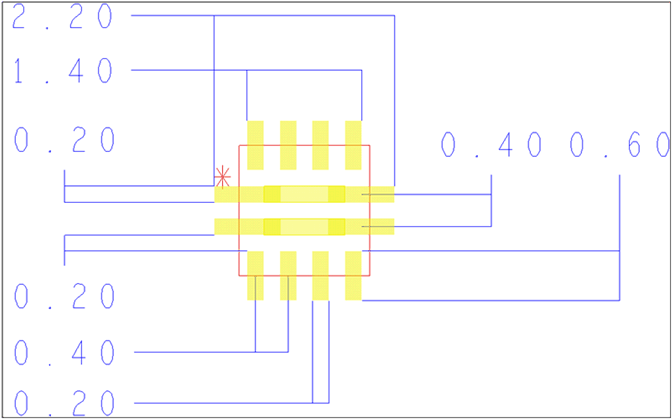ZHCSDS6D May 2015 – October 2017 TUSB211
PRODUCTION DATA.
10 Layout
10.1 Layout Guidelines
There is no need to break the USB signal trace. Thus, even with the TUSB211 powered down, or not populated, the USB link is still fully operational. To avoid the need for signal vias, routing the High Speed traces directly underneath the TUSB211 package, as illustrated in the PCB land pattern shown in Figure 8, is recommended.
Although the land pattern shown below has matched trace width to pad width, optimal impedance control is based on the user's own PCB stack-up. It is recommended to maintain 90 Ω differential routing underneath the device.
All dimensions are in millimetres (mm).
10.2 Layout Example
 Figure 8. DP and DM Routing Underneath Device Package
Figure 8. DP and DM Routing Underneath Device Package